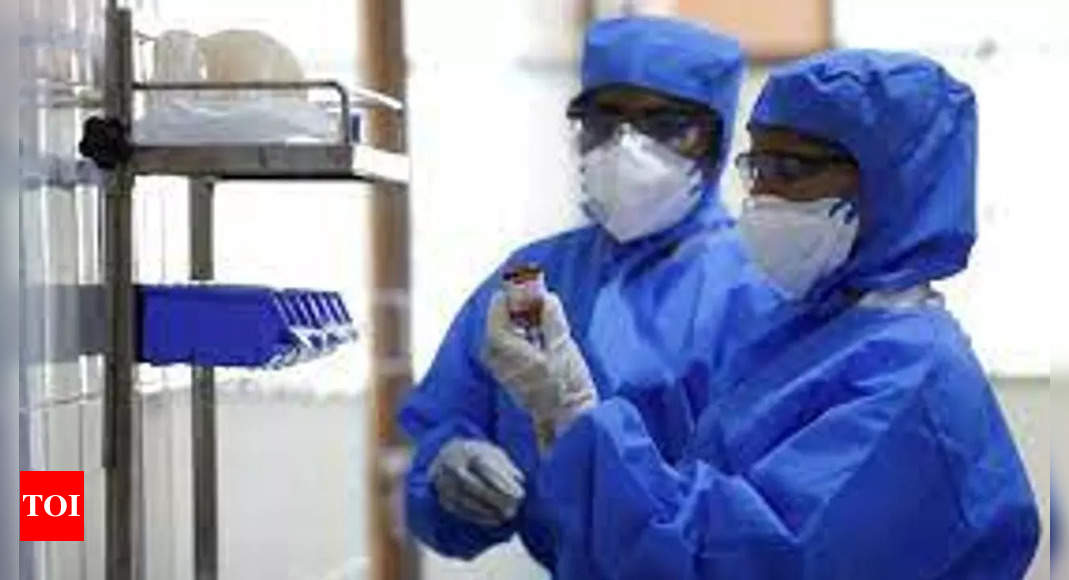WASHINGTON: A research reveals how SARS-CoV-2 infects mind cells referred to as astrocytes, inflicting structural adjustments within the mind.
An infection with SARS-CoV-2 may cause mind alterations and neurocognitive dysfunction, notably in lengthy Covid-19 syndrome, however the underlying mechanisms are elusive.
Daniel Martins-de-Souza and colleagues used MRI to check mind construction in 81 research individuals recovering from a light Covid-19 an infection and 81 wholesome people.
The authors discovered that the previous group exhibited decreased cortical thickness, which was correlated with cognitive impairments and signs resembling nervousness and despair.
The authors analyzed mind samples from 26 individuals who had died of Covid-19, discovering that samples from 5 of those people exhibited tissue injury.
Additional evaluation of broken mind samples revealed that astrocytes, that are mind cells that maintain neuronal metabolism, had been notably prone to be contaminated with SARS-CoV-2 and that the virus enters these cells by means of the NRP1 receptor.
As soon as contaminated, astrocytes exhibited altered ranges of metabolites used to gas neurons and neurotransmitter manufacturing, and the contaminated cells secreted neurotoxic molecules.
In keeping with the authors, the findings uncover structural adjustments noticed within the brains of individuals with Covid-19.
The importance of the research denotes the neurological signs which are among the many most prevalent of the extrapulmonary issues of Covid-19, affecting greater than 30 per cent of sufferers.
On this research, we offer proof that extreme acute respiratory syndrome coronavirus 2 (SARS-CoV-2) is discovered within the human mind, the place it infects astrocytes and to a lesser extent, neurons.
We additionally present that astrocytes are prone to SARS-CoV-2 an infection by means of a noncanonical mechanism that includes spike-NRP1 interplay and reply to the an infection by transforming vitality metabolism, which in flip, alters the degrees of metabolites used to gas neurons and assist neurotransmitter synthesis.
The altered secretory phenotype of contaminated astrocytes then impairs neuronal viability.
These options may clarify the injury and structural adjustments noticed within the brains of Covid-19 sufferers.
Though rising proof confirms neuropsychiatric manifestations related primarily with extreme Covid-19 an infection, long-term neuropsychiatric dysfunction (not too long ago characterised as a part of “lengthy Covid-19” syndrome) has been continuously noticed after gentle an infection.
The research reveals the spectrum of cerebral impression of extreme acute respiratory syndrome coronavirus 2 (SARS-CoV-2) an infection, starting from long-term alterations in mildly contaminated people (orbitofrontal cortical atrophy, neurocognitive impairment, extreme fatigue and nervousness signs) to extreme acute injury confirmed in mind tissue samples extracted from the orbitofrontal area (by way of endonasal transethmoidal entry) from people who died of COVID-19.
In an impartial cohort of 26 people who died of Covid-19, we used histopathological indicators of mind injury as a information for potential SARS-CoV-2 mind an infection and located that among the many 5 people who exhibited these indicators, all of them had genetic materials of the virus within the mind.
Mind tissue samples from these 5 sufferers additionally exhibited foci of SARS-CoV-2 an infection and replication, notably in astrocytes.
Supporting the speculation of astrocyte an infection, neural stem cell-derived human astrocytes in vitro are prone to SARS-CoV-2 an infection by means of a noncanonical mechanism that includes spike-NRP1 interplay.
SARS-CoV-2-infected astrocytes manifested adjustments in vitality metabolism and in key proteins and metabolites used to gas neurons, in addition to within the biogenesis of neurotransmitters.
Furthermore, human astrocyte an infection elicits a secretory phenotype that reduces neuronal viability.
The research ends in cognitive Impairments and Neuropsychiatric Signs in Convalescent COVID-19 Sufferers Correlate with Altered Cerebral Cortical Thickness.
A cortical surface-based morphometry evaluation (utilizing a high-resolution 3T MRI) on 81 topics identified with gentle Covid-19 an infection (62 self-reported anosmias or dysgeusia) who didn’t require oxygen assist (methodological particulars and affected person demographics are offered in SI Appendix).
The evaluation was carried out inside a mean (SD) interval of 57 (26) d after SARS-CoV-2 detection by qRT-PCR, and the themes had been in contrast with 81 wholesome volunteers (with out neuropsychiatric comorbidities) scanned in the course of the COVID-19 pandemic (balanced for age [P = 0.97] and intercourse [P = 0.3]).
The Covid-19 group offered increased ranges of tension and despair signs, fatigue, and extreme daytime sleepiness (SI Appendix, Desk S1 reveals epidemiological and scientific information).
An evaluation of cortical thickness (adjusted for a number of comparisons utilizing the Holm-Bonferroni methodology) revealed areas of decreased cortical thickness solely within the left hemisphere, together with the left gyrus rectus (P = 0.01), superior temporal gyrus (P = 0.036), inferior temporal sulcus (P = 0.02), and posterior transverse collateral sulcus (P = 0.003) (Fig.
1A).
There was no noticed improve in cortical thickness.
.



Comment here